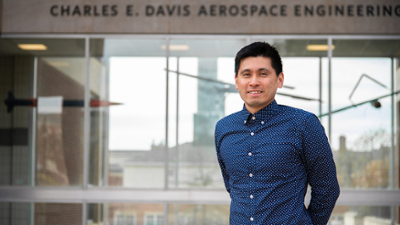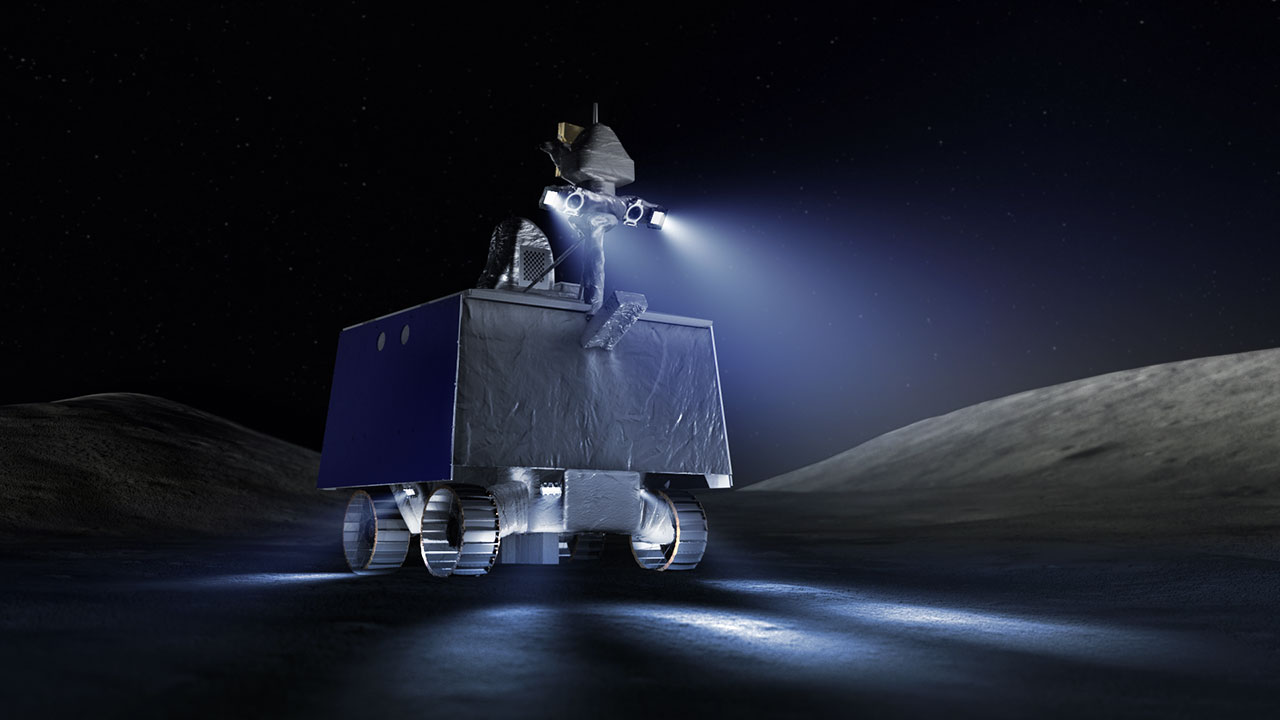Auburn joins NASA's Artemis rover mission to explore volatiles near the lunar South Pole
Published: Jan 28, 2022 4:00 PM
By Joe McAdory
How much water is on the moon and where is it distributed? Masatoshi Hirabayashi will soon have answers.
Hirabayashi, assistant professor in aerospace engineering, is one of newly selected eight co-investigators involved in NASA’s 100-day Volatiles Investigating Polar Exploration Rover (VIPER) mission. As part of NASA’s Artemis series of missions, including a historic mission that will send the first person of color and first woman to the Moon, VIPER will explore volatiles and soils in highland regions west of Nobile Crater near the lunar South Pole and create the first resource map of this region. This roughly 1,000-pound, robotic four-wheeled rover will be 8 feet tall and 5 feet across, and delivered to the Moon by Astrobotic’s Griffin lander via NASA’s Commercial Lunar Payload Services initiative in late 2023.

In the Earth's atmosphere, water is a liquid at room temperature but frozen when the temperature is less than 32 degrees Fahrenheit (0 Celsius). However, on the Moon, because of its deficient atmosphere, water can stay still on the surface as ice only when the temperature is less than minus 160 degrees Celsius (minus 260 degrees Fahrenheit); however, water molecules start moving away as the temperature increases. VIPER will explore shadowed regions that satisfy such low temperatures to see whether ice and other volatiles exists.
Hirabayashi said the mission, a prelude to future missions to Mars, has a two-fold objective. “The scientific question remains … where did the water and other volatiles on the Moon come from? This is directly related to the origin of our lives,” he said
The second is In-Situ Resource Utilization (ISRU): can we harvest the Moon’s resources for future space exploration? When spaceships go far and stay long in space, it is impossible to bring all necessary items from the Earth. Using on-site resources, for example, as fuel, may be one way to solve this issue.
Slightly faster than giant tortoise, VIPER will traverse 10 to 15 miles over shadowed and sunlit highland terrains at speeds of 0.25 to 0.45 mph. The rover will drill lunar soil up to 1 m depth and use multiple remote sensing instruments to measure volatiles and soils’ properties. VIPER’s measurements offer breakthroughs to better understand volatile cycles in cold regions on the Moon, key clues on their origin and evolution and future ISRU.
Hirabayashi’s investigation is titled, “Statistical and Thermal Approaches to Constrain the Impact Induced Right Regolith Volatile Distribution Mechanisms.” More simply, he’s going to explore the distribution of water beneath the lunar surface.
“The Moon has been bombarded by meteoroid impacts over its 4.6 billion years history. As a result, this subsequent mechanism has mixed volatiles and lunar soils over time. On the other hand, sunlight also heats the lunar surface. Complex interactions of these processes lead to unique volatile distributions beneath the surface on the Moon, even in its shadowed regions.
Thus, analysis needs interdisciplinary knowledge and skills to integrate multi-physics processes.” Hirabayashi will contribute to exploring this question by applying his modeling and mission-data analysis skills.
Hirabayashi said, “I am deeply honored to be part of this important mission,” he said. “I am thrilled to represent Auburn University in this project. I’m really proud of this opportunity and I’ll do my best to contribute.”
Seven other co-investigators have diverse roles within the mission. They include: Kathleen Mandt, Johns Hopkins Applied Physics Laboratory (tracing lunar volatile sources based on composition); Parvathy Prem, Johns Hopkins Applied Physics Laboratory (modeling active volatile sources and transport during the mission); Myriam Lemelin, University of Sherbrooke, Quebec, Canada (unmixing the spectral variations of the south polar region to retrieve its composition, volatile content, sources and modification processes); Casey Honniball, NASA’s Goddard Flight Center (comparing the exchange of water and methane with the lunar surface and exosphere); Laszlo Kestay, U.S. Geological Survey in Flagstaff, Ariz. (ground truth for lunar resource assessments); Barbara Cohen, NASA Goddard (measurements of nitrogen and noble gasses in polar regolith); and Kevin Lewis, Johns Hopkins University (geophysical traverse at the lunar with VIPER accelerometers).
Hirabayashi, who directs Auburn’s Space Technology Application Research (STAR) Lab, is no stranger to NASA space exploration. The assistant professor is a co-investigator for NASA’s ongoing Double Asteroid Redirection Test (DART), where he will research the kinetic impact the satellite DART makes with an asteroid’s moon. The collision is expected later this fall.
Media Contact: , jem0040@auburn.edu, 334.844.3447
The VIPER is expected to be delivered to the moon in late 2023.

